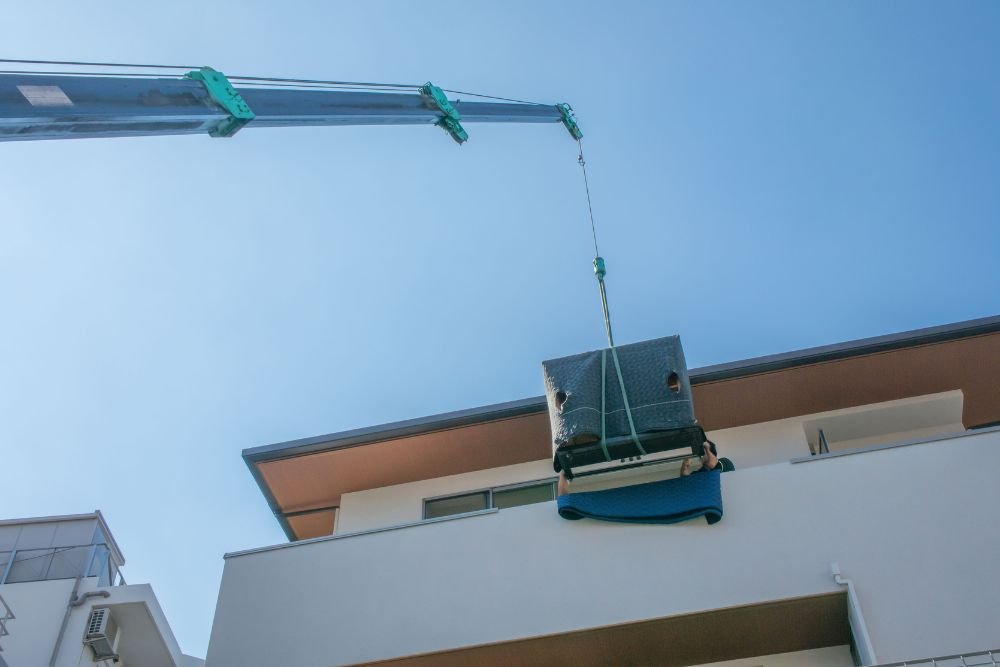
When tackling your next DIY project, it's vital to focus on safety. Rigging gear, often neglected, plays a crucial role in fastening loads and preventing mishaps. From cables to pulleys and shackles, understanding how to correctly use this equipment can be the separation between a successful project and a potentially hazardous situation.
Before you begin any lifting or shifting operations, take the time to acquaint yourself with the functionality of each rigging component. Inspect your gear for damage, and never neglect safety by using compromised equipment.
Essential Rigging Gear: Your Guide to Making Moving Day Easier
When it comes/you're facing/it's time for your next big move/move day/household relocation, ensure/make certain/guarantee you have the right tools/equipment/supplies. Rigging equipment/Moving gear/Lifting tools can significantly simplify/greatly assist/make a world of difference in moving heavy items/transporting bulky furniture/handling your belongings safely. From basic straps/strong ropes/durable lifting bands to pulleys and hooks/lifting systems/mechanical aids, understanding the basics/fundamentals/essentials can transform/revolutionize/streamline your moving process/experience/day. This beginner's guide/resource/overview will equip you/walk you through/help you understand the key pieces/vital components/essential items of rigging equipment and how to use them/their applications/safe handling techniques.
- Invest in/Consider purchasing/Acquire a quality set/durable collection/range of rigging straps/lifting belts/moving bands
- Learn how to/Familiarize yourself with/Master the use of pulleys and hooks/lifting systems/mechanical advantages
- Prioritize safety by/Always practice/Make sure to
- inspect equipment regularly/check for wear and tear/ensure proper functionality
With the right knowledge and preparation, you can/moving day can become/you'll be able to tackle your move with confidence/handle heavy items safely/make your moving experience less stressful.
Securing Your Loads: Rigging Basics for Home Renovations For your next DIY project
Renovating your dwelling can be a rewarding experience, but it's crucial to prioritize safety. One often overlooked aspect is securing your loads properly. When you're transporting heavy materials like lumber or drywall, or simply lifting objects around your work area, using the correct rigging techniques can prevent accidents and damage.
- Start with understanding the weight you're dealing with. This will help determine the appropriate wire and gears.
- Inspect your tools for any wear before each use. A single frayed rope can lead to a serious incident.
- Tie your loads properly using knots that are known for their strength and reliability, such as the bowline or clove hitch.
- Always inspect your system while working. Fine-tune as needed to maintain a secure connection.
Be aware that safety should always be your top priority. Don't hesitate to seek professional guidance if you're unsure about any aspect of rigging for your home renovation project. A little precaution can go a long way in preventing injury.
Lifting It Right: Safe and Effective Rigging Techniques for Every Homeowner
Whether you're tackling a major home construction endeavor, or simply need to secure heavy items, understanding rigging techniques can make all the difference. Properly rigging ensures that loads are handled with accuracy, minimizing the risk of injury and damage to your workspace.
A well-executed rigging setup involves a few key factors: first, choose the appropriate lifting equipment for the job. This could include hoists, pulleys, shackles, and other tools. Next, double-check that all equipment is in excellent condition and rated for the weight you're lifting.
Always assess your rigging before use, checking for any signs of wear or damage. Once you have the right equipment, create a secure attachment point for your load using appropriate belts.
Remember that safety should always be your top priority. Employ appropriate personal protective equipment (PPE), including gloves, eye protection, and sturdy footwear.
Before you lift anything, signal clearly with anyone else involved to avoid accidents. Always raise loads in a controlled manner, avoiding sudden jerks or drops. If you're ever unsure about a particular lifting task, it's always best to seek guidance to a qualified professional.
Fundamental Tools for the Toolbox: Mastering Basic Rigging
When it comes to rigging, success depends heavily on having the proper tools at your readiness. A well-stocked toolbox can make all the difference between a smooth operation and a frustrating headache. Amongst the essentials, you'll need a sturdy set of cordage in various diameters to suit different applications. A reliable knife for precise cuts, and a selection of knots to secure your loads are also vital.
- Complementing this core set, you'll want a versatile block system for increasing force and reducing strain.
- Checking your rigging hardware regularly for wear and tear is paramount to safety
By acquiring these fundamental tools and learning their applications, you'll be well on your way to confidently tackling any rigging project.
Transforming Your Workshop into a Dream DIY Space
Whether you're fixing that old tractor or cultivating a vibrant garden, having the right equipment on hand can make all the difference. A well-organized garage workshop can become your perfect basecamp for tackling any Best real estate team Fort Lauderdale home task. From basic hand tools to specialized power devices, a well-stocked garage facilitates you to take on projects big and small.
- Arrange your equipment for easy access.
- Acquire in reliable tools that will last.
- Consider a dedicated surface for your projects.